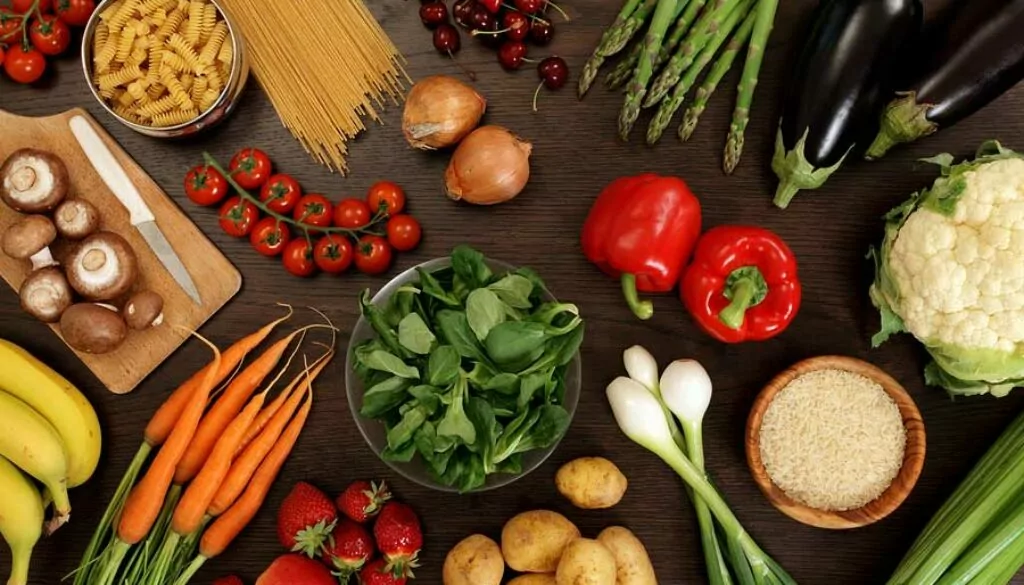 Introduction:
Introduction:
Maintaining a balanced and nutritious diet is crucial for individuals managing diabetes. Among the various food groups that play a pivotal role in diabetes management, vegetables stand out as a cornerstone of a healthy eating plan. Packed with essential vitamins, minerals, and fiber, vegetables contribute to stable blood sugar levels and overall well-being. In this article, we will explore a range of diabetes-friendly vegetables that not only add vibrant colors to your plate but also provide a nutritional boost.
Leafy Greens:

The Champions of Nutrient Density
Leafy greens such as spinach, kale, Swiss chard, collard greens, and romaine lettuce are diabetes superheroes. Rich in vitamins A, C, and K, as well as minerals like calcium and magnesium, these greens offer a low-calorie, high-fiber option. Incorporating them into salads, stir-fries, or smoothies can elevate both the taste and nutritional content of your meals.
Cruciferous Vegetables:

A Crucial Addition
Broccoli, cauliflower, Brussels sprouts, cabbage, and kale belong to the cruciferous vegetable family. These veggies are not only low in carbohydrates but also provide a healthy dose of fiber and antioxidants. Including them in your diet may contribute to better blood sugar control and reduced risk of chronic diseases.
Non-Starchy Vegetables:

Colorful and Nutrient-Rich
Bell peppers, cucumbers, tomatoes (in moderation), mushrooms, and zucchini are examples of non-starchy vegetables that add flavor and variety to your meals. With their low carbohydrate content and high fiber levels, they can be enjoyed in generous portions. Roasting, grilling, or enjoying them raw are excellent ways to savor their natural goodness.
Root Vegetables in Moderation:

Finding Balance
While root vegetables like carrots, sweet potatoes, and beets contain more carbohydrates, they can still be included in a diabetes-friendly diet when consumed in moderation. These colorful options offer essential nutrients like beta-carotene and fiber. Roasting or steaming is a healthier preparation method compared to frying.
Legumes:

Protein-Packed Plant Goodness
kidney beans, chickpeas, Lentils, and black beans are excellent sources of plant-based protein and fiber. Including legumes in your meals can help manage blood sugar levels and provide a feeling of fullness. Try adding them to soups, salads, or stews for a satisfying and diabetes-friendly dish.
Allium Vegetables:

Flavorful and Healthful
Garlic, onions, and leeks not only enhance the flavor of your meals but also offer potential health benefits for individuals with diabetes. Studies suggest that these allium vegetables may have anti-inflammatory and blood sugar-lowering effects. Including them in various recipes can be a tasty way to promote overall well-being.
Low-Glycemic Index Vegetables:

Regulating Blood Sugar
Certain vegetables, such as asparagus, eggplant, peppers, and summer squash, have a low glycemic index. This means they have a minimal impact on blood sugar levels when consumed. Incorporating these vegetables into your diet can contribute to better glycemic control.
Conclusion:

In the journey of managing diabetes, vegetables emerge as essential allies, providing a wealth of nutrients without causing significant spikes in blood sugar. Diversifying your vegetable intake, being mindful of portion sizes, and exploring various cooking methods are key strategies for crafting a diabetes-friendly meal plan. Consulting with healthcare professionals and registered dietitians ensures a personalized approach to nutrition, making the path to better health both manageable and enjoyable. Embrace the rainbow of vegetables, and let their natural goodness fuel your well-being.


